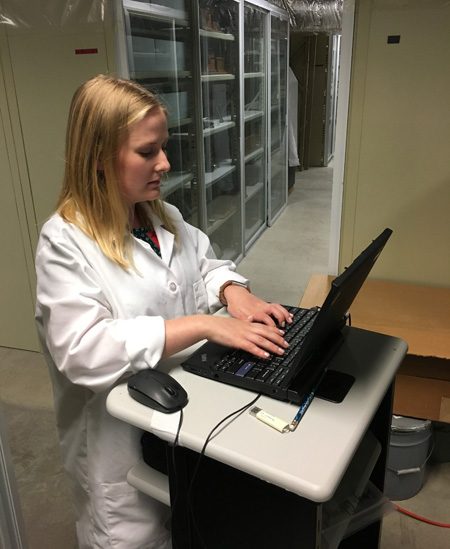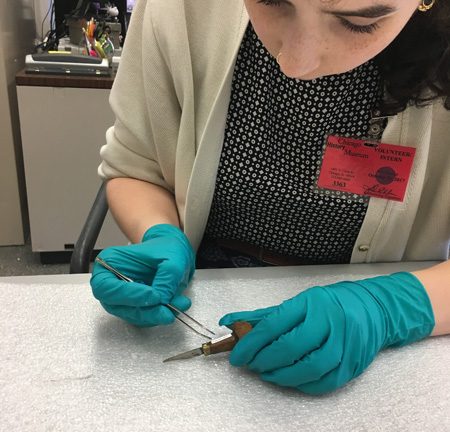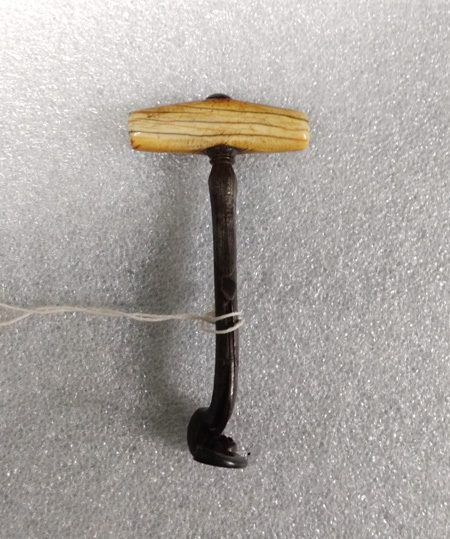CHM collections intern Catrien Egbert recaps her work cataloging the Museum’s massive Decorative and Industrial Arts collection and highlights some memorable finds.
If you’re like me, you’ve always wondered what treasures a museum’s collection might hold.
Last summer, I had the opportunity to find out as the collections team continued its endeavor to catalog the Decorative and Industrial Arts (DIA) collection on the Chicago History Museum’s fourth floor. In my head, the name evoked oil paintings, ornate mirrors, and porcelain vases. As work began, I realized this vision covered only a few of the approximately 100,000 artifacts in this 150-year-old collection, which itself is just a fraction of the nearly 23 million items in the Museum’s overall collection. I could not have predicted the artifacts we would discover.

As Egbert (above) calls out the dimensions of a spice shaker, her fellow intern Amy Sparks (below) verifies the data in our records. Photograph by CHM staff

The inventory process involves pulling objects from their storage space, then measuring and photographing them. It also requires recording an object’s location, visual description, and accession number, which is a unique code the Museum assigns to an artifact when it enters the collection. This feature is the key to research and one of the first things we look for during inventory. I quickly learned that a good treasure hunter has to have patience. On our first day of inventory, we came across a set of engraving tools owned by Olaf Thorsson, a Swedish immigrant who used them in the late 1800s. Though they were similar, each tool varied in length and description. On the fourth floor, we photographed, measured, and described each tool. Then in the collections office, we relabeled each one using archival paper and acrylic resin. In total, we did this for more than seventy tools.

Egbert carefully applies a new label to an engraving tool.
Because an accession number gives no clue about the object’s history or purpose, treasure hunters should be curious. Each artifact brought endless questions: Who originally owned this? Why was it donated? When is it from? What even is this? One of my favorite examples of this was a hooked tool we guessed could be an old-fashioned corkscrew. Imagine our surprise when research revealed it was a tooth extractor from the late 1880s!

This rudimentary dental tool consists of a curved metal hook attached to a wooden handle.
Research is an essential part of the inventory process, and it was gratifying to find answers to our questions about CHM’s records. After each visit to the fourth floor, we updated the information in The Museum System (TMS), our collections database, and conducted research to verify that our “discoveries” were correct. A treasure hunter should enjoy the best feeling in the world—satisfaction when an object’s records verify information recorded during inventory.
In total, we inventoried more than 400 artifacts. Among the gems discussed above, we found bookmarks from the 1933–34 world’s fair, roller skates from the 1980s, and food from the 1960s that was meant to be kept in fallout shelters in case of a nuclear disaster. Sometimes fantastic, sometimes perplexing, the stories behind artifacts make collections work an engaging way to understand the past. I can’t wait to hear what next year’s treasure hunters uncover!